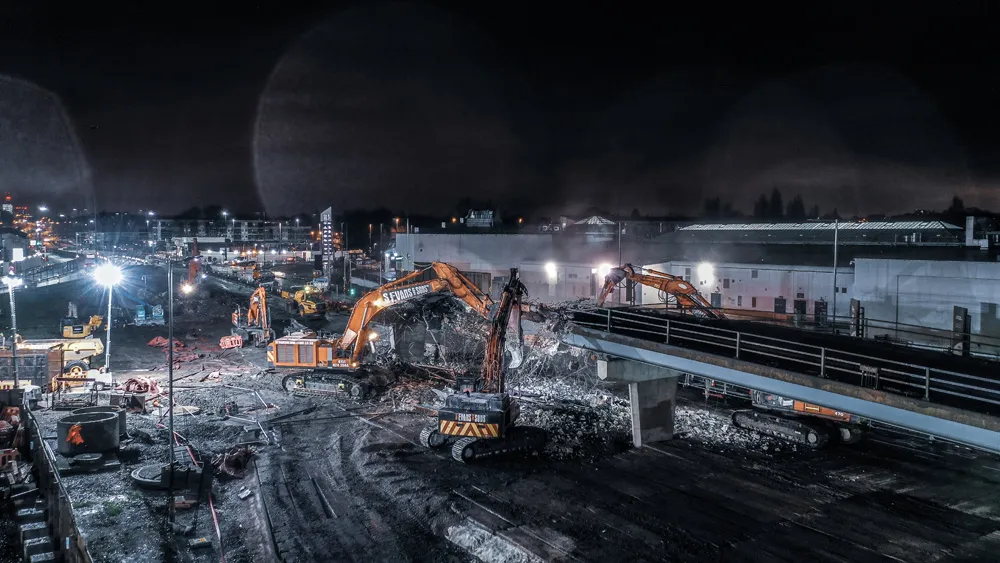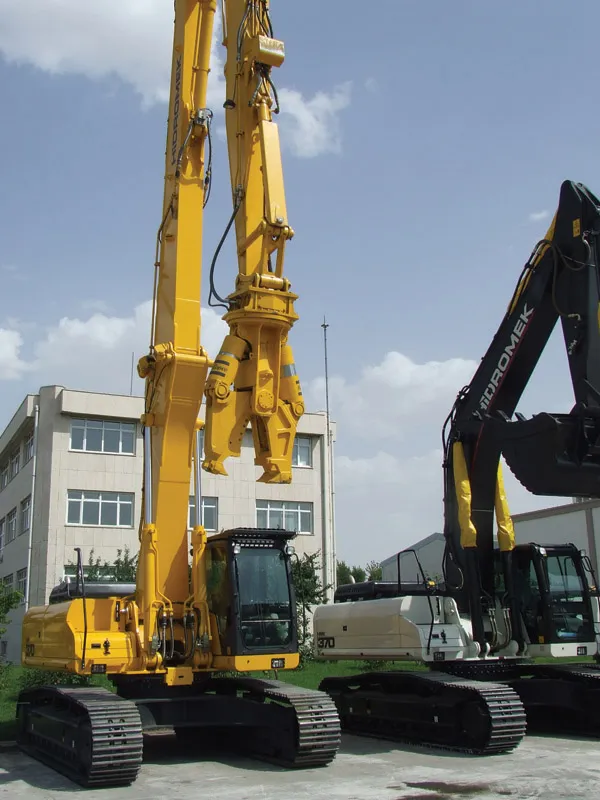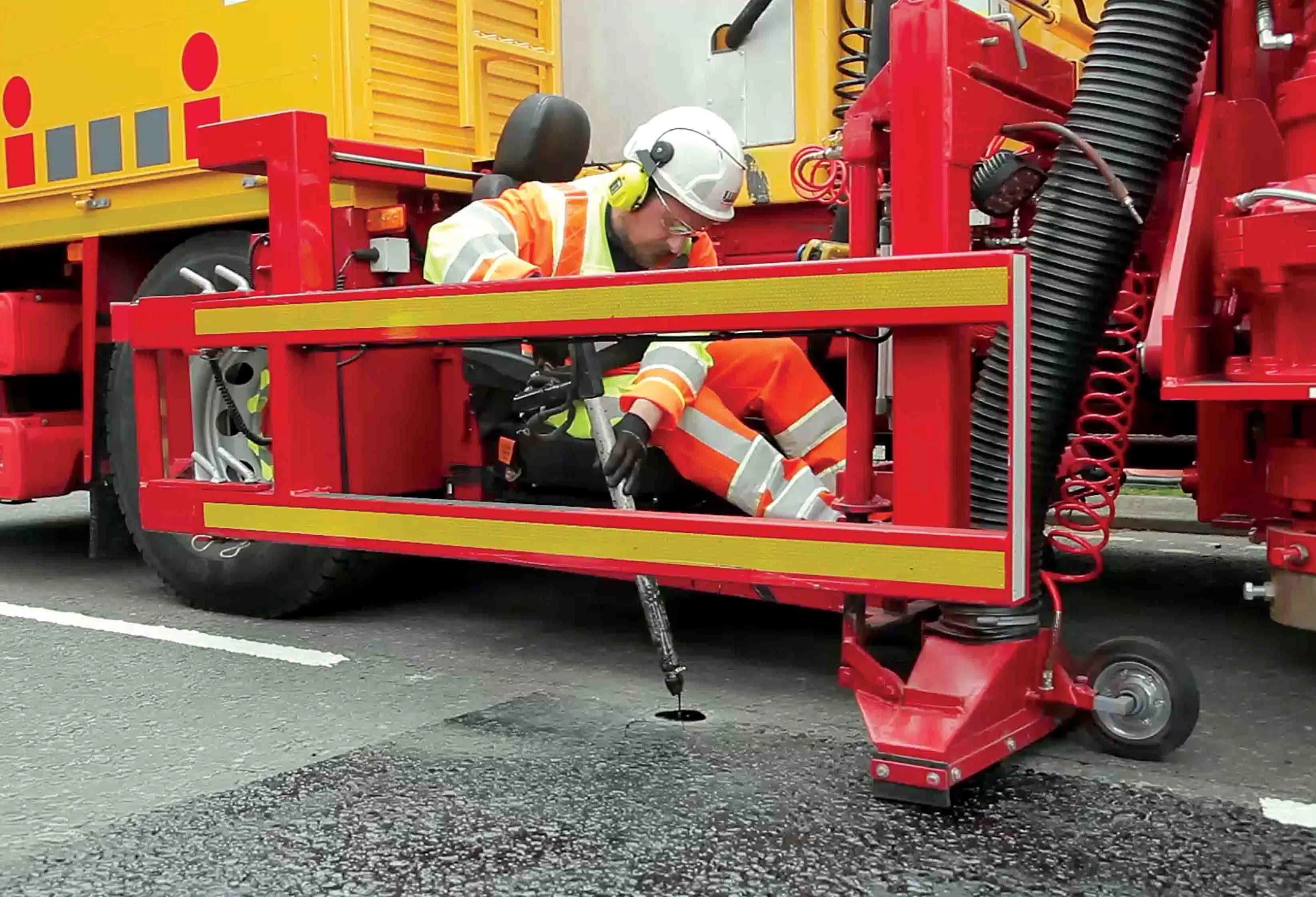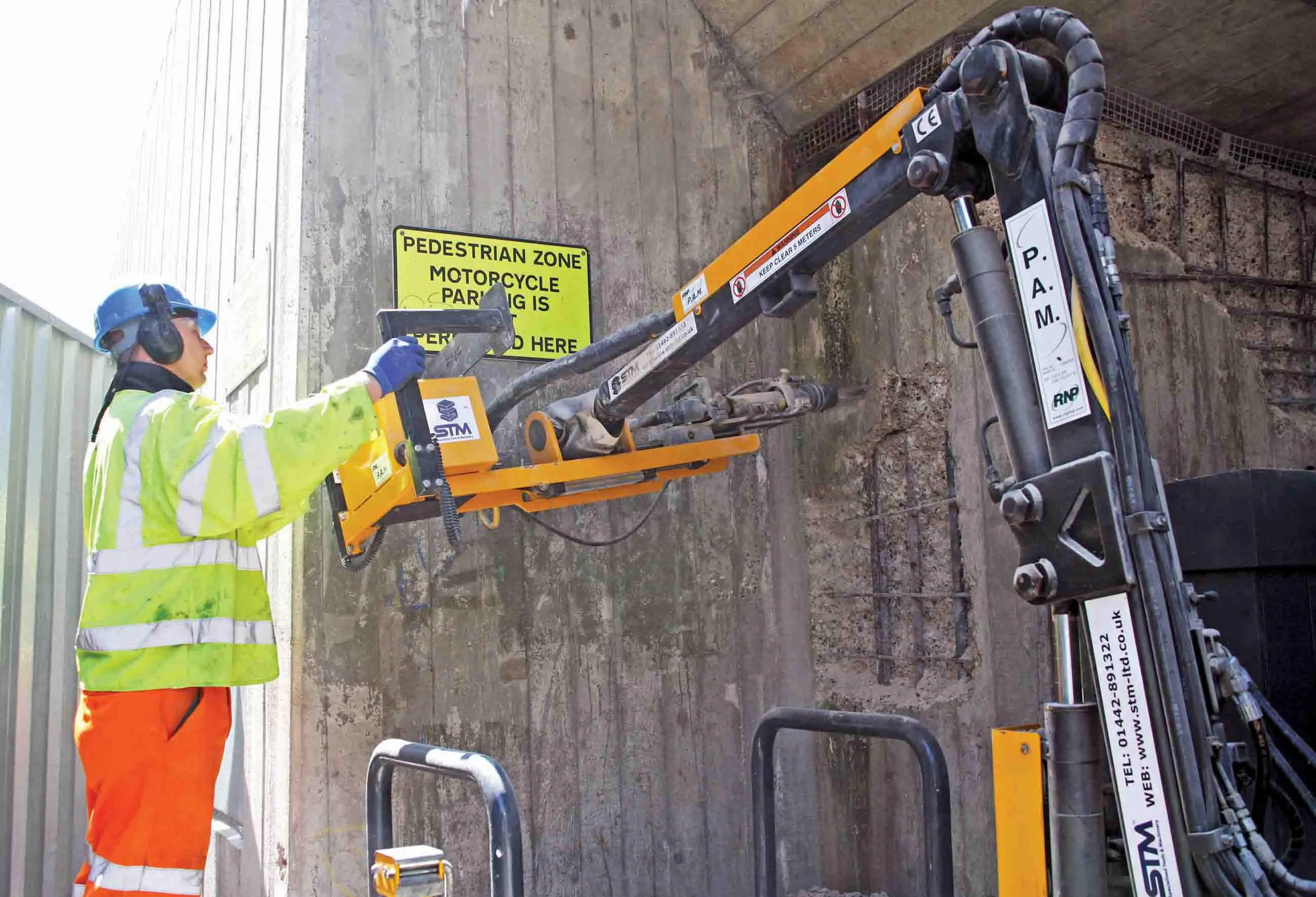
The 50-year-old flyover carried the busy A34 and was safely removed in just a single weekend to make way for an improved road layout. The work marks a key stage in Phase 2 of the A34 Perry Barr highways improvement scheme.
Extensive planning was needed for the job to be carried out safely. The highways scheme forms part of a £500 million regeneration project to transform Perry Barr and surrounding areas.
Working alongside specialist subcontractor S Evans & Sons Demolition, principal contractor, Tarmac employed seven excavators to remove the flyover.
Hitachi excavators were amongst the machines used for the work. These were fitted with demolition attachments to crush and remove the concrete superstructure and to cut through the steel supports. Over 300 lorryloads of materials were removed from the site, with all of the waste steel and concrete being recycled. The Tarmac team was able to minimise traffic disruption by removing the flyover abutments as well as the spans in one go.
With only one weekend allocated for the work, careful coordination of traffic was critical to the job. Transport for West Midlands (TfWM), working closely with Tarmac and the City Council, led in the organisation and communication of statutory diversion routes. The network was closely monitored through the Regional Transportation Coordination Centre to keep local residents, businesses, commuters and visitors informed of live traffic updates, road closures and alternative methods of travel.
Phase 2 of the A34 Perry Barr highways improvement scheme is set to complete in May 2021. Tarmac is now planning lifting precast sections of a new bridge onto the redesigned Birchfield Junction nearby within the next few weeks.
The wider programme of Perry Barr highway improvement works is set to be completed at the end of this year and will see local roads remodelled and redesigned to make the area more accessible by sustainable forms of transport including a new bus corridor.
The highway scheme will support the delivery of new homes, improvements to public transport, walking and cycling routes, new community facilities to make Perry Barr one of the most well-connected areas in the West Midlands.








